Garden Basics
Gardening is a wonderful hobby and well worth the time and financial investment for anyone who desires to build a beautiful landscape, add privacy from other homes, create shade over your yard or roof, and any number of other worthwhile goals.
Whether your plans are simple or intricate, there are a few basic things everyone who desires to spend time in a garden should know before they begin.
Climate Awareness
Any gardener needs to get familiar with the term “Hardiness Zone” and more importantly become familiar with the hardiness zone in the area that they live, or plan to be gardening in.
For example, a plant that will grow in the Rio Grande Valley in south Texas may very well not be able to survive a winter in Nebraska, or for that matter, even one in other areas of the same state, depending on how far north you go.
The United States Department of Agriculture publishes Hardiness Zone maps periodically, which break a region down by zones, in which the zones are determined by the average lowest annual temperature. When you look at one of these maps you can see what zone you live in. Depending on what that zone number is you will be able to determine what plants are best suited to your climate. A plant will be labeled with a number which corresponds to a certain hardiness zone. This means that the plant will typically withstand the lowest annual temperatures of that particular zone.
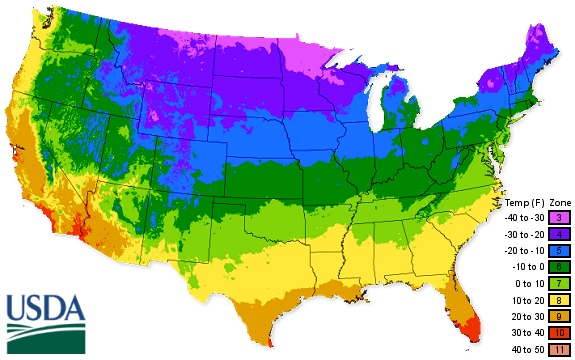
You also must be mindful of choosing plants that will survive your summer heat, if you live in a warm climate. Someone in Texas can decide to plant something that will survive that Nebraska winter, and thus be confident it will survive his Texas winter, but not realize that the same plant will likely die trying to get through the summer.
A good rule of thumb to use when selecting plants by hardiness zone is to choose plants that are hardy to your zone, or perhaps 1-2 zones to your north (zone numbers decrease the farther north you go). Do not try to go the other way and choose a plant that is 1-2 zones to your south. Most likely that plant will not survive your winter.
Soil Basics
If you garden you are going to have to deal with soils, as this is where you will place your plants in. And soils are going to vary widely based upon where you are located. Fortunately, you can discover what type of soil you have by taking a sample and having it tested in any number of ways. Some tests are ones you can conduct yourself, others may require you to send your sample to a local government (usually a county) office where they will perform the test for you for a small fee.
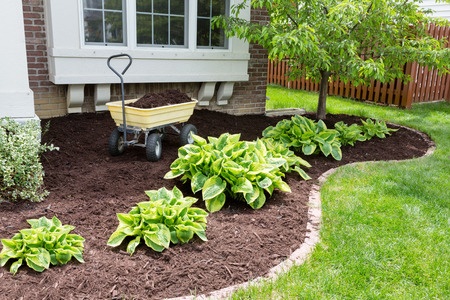
Two common types of soil composition are acidic and alkaline. Different types of plants will grow well in acidic soil, but not so well in alkaline soil. Your soil might feel almost like clay, or it my be sand like. Most people have soil that is not perfect. Fortunately, after you have determined the composition of your soil, there are various ways in which you can amend it so that it will be more conducive to the plants you want to grow. There are a number of different things that can be added to your soil, all of it organic matter of some form. If you are going to start a garden, or attempting to resurrect a dormant garden, you will almost certainly have to add some degree of organic matter to your soil. Mulch is used to lay over the soil as a way to preserve moisture and aid drainage.
Fertilizer
When choosing a fertilizer for your lawn or plants you need to know exactly what you are buying. A bag of fertilizer comes with three numbers on the bag. The numbers represent the percentage of nitrogen, phosphorus, and potassium that is contained in the fertilizer. Each one of these nutrients has a role in feeding the plant. If the bag has a label of 20-5-10 it means that the bag contains 20% nitrogen, 5% phosphorus, and 10% potassium, with the total nutrient content equal to 35% of the contents of the bag. The remaining 65% content is filler that is needed to help spread the fertilizer and keep it from burning plants.
The above percentages are generally summed into a ratio, where the percentages are reduced by the lowest common denominator. In the example above the lowest common denominator is 5 and the ratio is 4-1-2. Your soil composition will play a large role in what ratio of fertilizer is appropriate for your garden.
Watering
Water, and conserving it, has become a critical issue everywhere. It is the obligation of everyone who cares for a garden to learn how they can best utilize this resource without wasting it. Inefficient and wasteful watering of landscapes is a major problem in the effort to use water wisely.
It is recommended to water at certain times during the day, and generally best to do so early in the morning before the sun has risen to its height. It also helps to water less frequently, but more thoroughly when you do. In other words, it is generally better to give your area a thorough soaking once a week than to water lightly three times a week. The deeper watering helps root growth.
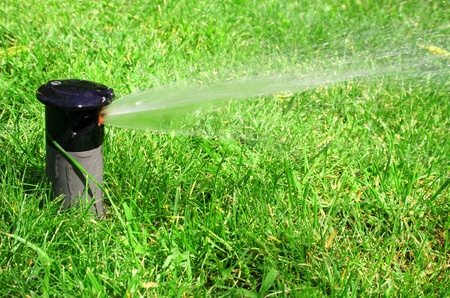
If you use a sprinkler system, or plan to invest in one, make sure to keep an eye on it and do not let it just come on at a pre programmed time. How many times have you driven down a street during a heavy rain and seen water sprinklers going? That is a huge unnecessary waste of water resources. If you are going out of town for several days then it makes sense to automatically program your sprinkler system, but otherwise it only takes a small investment of time to operate your system manually. It may be worthwhile to invest in a smart controller, a device that can regulate your sprinkler system to water only at certain times based on factors such as temperature, amount of sunlight, and frequency of rainfall, etc…
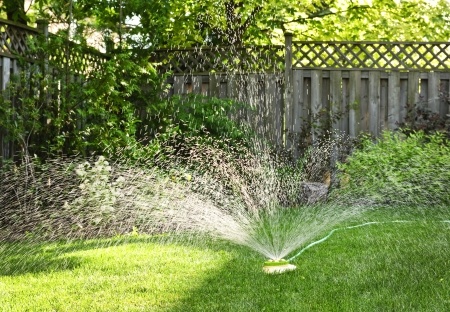
If you don’t have a sprinkler system then you have to manually control your watering function. This can be tricky because if you are having to move a manual sprinkler to different parts of your yard you have to pay attention to make sure you water evenly. Some areas are going to need more water than others based on exposure to sunlight or what is planted. It is best to come up with a routine that works for you amd your schedule. Your city may dictate to you what days and what times you are allowed to water. This should not be a problem, as long as you can devote a portion of one allowed watering day a week to cover your needs. Remember, it is better to water less often, but more thoroughly when you do. Usually if you hand water you are not bound by the restrictions of sprinkler watering. Some shrubs, and new lawns and trees will require you to hand water until roots can get established.
Pruning
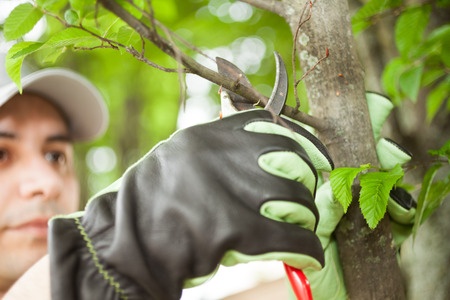
It is a good idea to prune your existing shrubs and trees periodically. By pruning you can remove dead or damaged limbs or branches, to some extent re shape the form of your plant, and reduce its height within reason.
When you prune, and how much, depends a great deal on what type of plant it is, whether it is an evergreen, and if it is a flowering shrub, when it blooms.
Much pruning, for example trees, is done during the winter months. This is when you remove dead or damaged limbs. However pruning of spring flowering shrubs is best done after that plant has bloomed. Summer flowering shrubs are best pruned in the winter.
Garden Tools
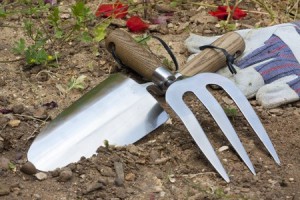
If you are going to work in a garden you are going to need to have a few essential tools. The tools you will always need on hand are a shovel, rake, hoe, and hand trowel for digging small holes.
Other tools you will likely need from time to time are a spading fork, which has four tines and resembles a fork utensil. It is used to plunge into the soil in a certain area and loosen the soil. Hand pruners and loppers are essential if you are going to be pruning.
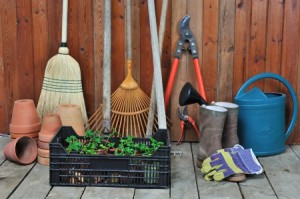
There are times when heavier tools are required, or at the very least useful. A cultivator or a mini tiller can be used in a smaller area and do the job you need for loosening larger areas of soil. This includes preparing a bed for planting, mixing in compost, mulch, or other organic material into your existing soil.

In some cases a heavy roto tiller may be required, however these are expensive and unless you have a large area or areas to till that will require a number of uses a year, you might well be best served to rent this type of equipment on the occasions in which one would make more sense than a smaller cultivator.